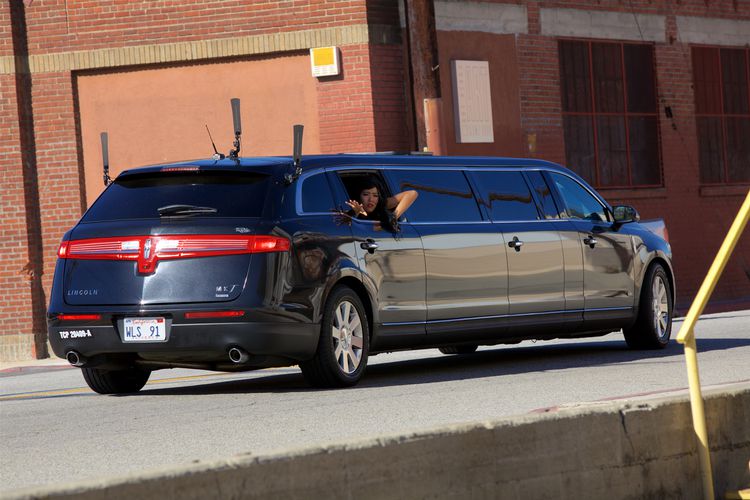-
Chapter 2 CrashRed Route - An intersection in Boyle Heights
Lucha and Jamson exchange information in the aftermath of their accident.
-
Chapter 4 Lucha's Quinceañera SongRed Route - Mariachi Plaza, Boyle Heights
Lucha remembers the day she left her childhood behind.
-
Chapter 6 Jameson PortraitYellow Route - The 2nd Street Tunnel, Downtown Los Angeles
Jameson contemplates the multifaceted nature of his personality.
-
Chapter 7 The ReunionYellow Route - A Rehearsal Studio in the Arts District
Lucha and Jameson connect at Lucha's performance of Orpheus and Eurydice.
-
Chapter 8 First KissRed Route - Hollenbeck Park, East Los Angeles
Romance blooms on Lucha and Jameson's first date.
-
Chapter 9 Angel's PointGreen Route - Angel's Point, Elysian Park
Lucha and Jameson share a passionate physical experience.
-
Chapter 11 The Floating NebulaGreen Route - The Corn Fields, Los Angeles State Historic Park, Chinatown
The metaphysical peak in Lucha and Jameson's love.
-
Chapter 12 WeddingYellow Route - City Hall, Downtown Los Angeles
On their wedding day, Lucha gives Jameson a fateful gift.
-
Chapter 14 The Phone Call, Part 1Red Route - Traversing between the Arts District and Boyle Heights
Lucha receives a mysterious phone call from a voice she seems to recognize.
-
Chapter 17 Orlando's FairwellRed Route - Evergreen Cemetery
Before leaving Los Angeles, Orlando pays his last respects to his wife.
-
Chapter 18 Interlude (Car Wash)Green Route - AirStream Trailer, Elysian Park
Reflect on the impact of a location's geography on a person's psyche.
-
Chapter 24 The Red NotebookRed Route - Utter darkness
In a state of darkness, Lucha is haunted by Jameson's red notebook.
-
Chapter 25 The Other WomanYellow Route - The Bradbury Building, Downtown Los Angeles
Still submerged in darkness, Lucha dreams of Jameson's infidelity.
-
Chapter 26 HadesGreen Route - Bowtie Parcel, Los Angeles River
Lucha descends to the underworld in search of Jameson.
-
Chapter 28 Lucha and Orlando in LoveYellow Route - Historic Core, Downtown Los Angeles
After years apart, Lucha and Orlando reunite in Los Angeles.
-
Chapter 33 Farewell From the Roof TopsRed Route - Rooftops, Toy Factory Lofts, Biscuit Lofts, Ito Building Tower, Arts District
Lucha makes peace with Jameson's disappearance.

Despair
Trumpets: David Aguila, Lisa Edelman, Lucas Lipari-Mayer, Mona Seda
Music by Ellen Reid
Text by Mandy Kahn
Recording: Doug Balliett, Jillian Risigari-Gai, Evan Honse
Produced and recorded by Ellen Reid

Director’s Notes:
“This chapter was Lucha’s cry of despair, where she was literally split into two – and the only chapter that was not good for audiences with motion sickness. In her desperation, the two Luchas drove obsessively around the same street corner, over and over again. We originally called this chapter the Doppler Effect, because it began with Ellen’s early wish to explore that effect as a musical phenomenon. Each time the car would pass an abandoned loading dock, the window would roll down and a quartet of trumpets would blare a siren-like fanfare. The trumpeters seemed to multiply, as Lucha’s own vision of reality seems to fracture and decay.

The Doppler Effect
Discovered separately by Christian Doppler and Hippolyte Fizeau in the 1840s, this phenomenon refers to change in frequencey/pitch relative to speed. As the listener moves toward the sound, its wavelength decreases, causing its pitch to be perceived higher. Consequently, as the listener moves away from the sound, its wavelength increases, causing its pitch to be perceived lower.
“This was the chapter on the Yellow Route where the outside world infiltrated the isolation of the car interior (on the Red Route, this was Chapter 2, and on the Green Route this was Chapter 19). Not only did we have the trumpeters on the loading dock, but the haunting coda of the work had Lucha leave the car and sing from the street. Using the same wireless mics and Sennheiser antennae set-up from other chapters, Lucha’s voice changes from the immediacy of the shared space to the removed, alienated loneliness of the coda.
“Lucky Orpheus!” When you went to Hades, your Eurydice was there. Still in wedding whites-braiding slowly her clean hair-lilies fresh in her bouquet-lilac live behind one ear-but what flower could live here? Lucky, lucky Orpheus! Hades he visited and he left with his fresh bride. Oh Hades has bloomed in me. Hades now lives in me…I become a part of night.”

“Mandy’s text has Lucha sing: ‘I become a part of night.’ It made me think of creating a shroud that could ‘black out’ the windows and make the surrounding world disappear. So many other chapters were about observing the streets; in the depths of her despair, I wanted to find a way for that street life to be obliterated. A black shroud pressed against the windows suddenly made the cityscape disappear, and Lucha floated in a featureless darkness. When we were rehearsing this, I often thought of the ‘day for night’ approach most films take to create the illusion of a nocturnal setting in normal daylight hours – I thought we were doing the makeshift operatic version of that.
Laura Bohn drew strength from within to portray Lucha in the throes of despair.
“The ‘car-eography’ of this chapter, with the nauseating circling around the same block, was particularly demanding, and based on how long it took to drive around and around the block, the scene would also get cut short on a moment’s notice. Like Chapter 12 and Chapter 15, this scene was performed in a different order depending on the direction you experienced it: some audiences began with the shroud aria, others experienced it as a coda.
“As if it wasn’t already demanding for the artists to portray this anguished scene 24 times a day, they also had to be constantly prepared to deploy one of so many different alternative versions of the scene at a moment’s notice – I’m still astonished how they did it.”

